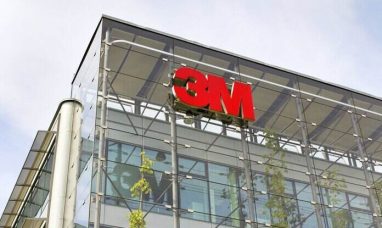According to Brent Thill, a long-time tech analyst at Jefferies, Amazon stock (NASDAQ:AMZN) has virtually priced in increased inflation and the possibility of a recession, which means that it is an excellent investment.
Investors are afraid that an increase in interest rates and the potential of a recession would have a detrimental influence on the profitability of an e-commerce company. As a result, the price of the company’s shares has decreased by thirty percent so far in the year 2022. Amazon stock (NASDAQ:AMZN) is the third worst performance within the well-monitored FAANG (Facebook, Amazon, Apple, Netflix, and Google) complex, outperforming the staggering 60% falls of both Meta and Netflix. FAANG stands for Facebook, Amazon, Apple, Netflix, and Google.
Thill recently published a fresh note in which he stated that he believes Amazon’s current stock price already embeds headwinds from a recession/cost inflation and anticipate the market to attach a higher value to core retail over time as cost headwinds are handled, and profitability grows.
Amazon Stock Price
More information, as provided by Thill in his recent notice to customers on Amazon (NASDAQ:AMZN), is as follows:
Aiming at a price of $165 (reiterated)
Rating: Buy (reiterated)
Assumed change in stock price: +42 percent
This month, Amazon.com Inc (NASDAQ:AMZN) will have its second annual Prime Day, which has the potential to be a significant sales booster for the company just in time for the key holiday shopping season.
A private survey conducted by JefData on August 31 among about 1,000 people in the United States indicated that 82% of Prime users intended to participate in a second savings event throughout the course of this year. This number rises from 59%, which was the participation rate on Prime Day. Additionally, eighty-five percent of persons who are interested in participating in the second event plan to spend more than fifty dollars on it. This number marks a rise from the previous percentage, which stood at 80 percent of customers who spent more than $50 on Prime Day. According to our projections, Amazon (NASDAQ:AMZN) might provide $6.1 billion or $4.1 billion in gross merchandise value or Net Sales, respectively, which would be a tailwind of 3% or 3% for the rise of 4Q22 Net Sales or gross merchandise value.
It seems possible that the financial effect of this second Prime Day, as well as Amazon’s dominant position in retail, is being neglected in the value of Amazon’s core retail company. Prime Day took place on July 16, 2017.
By applying peer-based growth-adjusted 2023 EV/EBITDA multiples of 30x to Amazon Web Services ($938 billion), 20x to advertising ($366 billion), and 10x to subscription services ($40 billion), the estimate that Amazon’s non-retail businesses have a total value of around $1.3 trillion. The sum-of-the-parts valuation suggests that the current valuation is assigning virtually no value to Core-Retail. This results in a $29/share free option at Amazon’s current price because the stock already includes meaningful headwinds from a recession or cost inflation, which limits the downside and creates an attractive risk-reward.
Amazon (NASDAQ:AMZN) is a diverse company, which will assist in softening the shock of a slowdown in consumer spending if the economy in the United States officially enters a recession.
Amazon’s geographic variety will help reduce the impact from regions of regional weakness, which is a significant risk for core-retail while declining consumption is a big risk for core retail.
The spending in the United States continues to be strong, with retail sales growing by 8% year over year and non-store sales growing by 12% year over year in August (much of which came from online shopping). However, the situation is deteriorating in Europe, with retail sales growth of -2%/-1% year over year in June/July, marking a deterioration from 1% growth in May. This compares to a rise of 1% in May.
It is possible that Amazon’s profit margins could look better in 2023 as a result of the company’s efforts to minimize costs and some respite from the skyrocketing inflation that occurred in 2022.
“The combination of inflation reduced productivity, and fixed costs will lead to cost headwinds for Amazon in the range of $12 billion to $16 billion in 2022. These cost headwinds are expected to occur. Amazon has already started to address these cost concerns, as evidenced by the fact that the company experienced a $2 billion sequential cost decrease in the second quarter (compared to the first), which was driven by cost leverage and greater route density. Even if macroeconomic headwinds create a slowdown in sales, Amazon (NASDAQ:AMZN) anticipates that it will be able to continue cutting expenses for the entirety of 2022, which should assist fuel growth in operating income. AWS is the key driver of overall operating income and is projected to have continuing outstanding growth in 2023, which will be supported by high backlog growth and favorable channel checks. This growth will be backed by the fact that AWS is the primary driver of overall operating income.”
Featured Image: Megapixl @ Mjilapong















